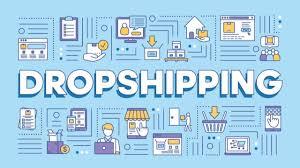Drop shipping is an extremely popular business model for new entrepreneurs, especially gen Zers and millennials, due to internet marketing skills far outweighing financial capacity.
WHAT IS DROPSHIPPING?
Dropshipping is a retail fulfillment method where a store doesn’t keep the products it sells in stock. Instead, when a store sells a product using the dropshipping model, it purchases the item from a third party and has it shipped directly to the customer. As a result, the seller doesn’t have to handle the product directly.
The biggest difference between dropshipping and the standard retail model is that the selling merchant doesn’t stock or own inventory. Instead, the seller purchases inventory as needed from a third party—usually a wholesaler or manufacturer—to fulfill orders.
The merchant is mainly responsible for gaining customers and processing orders in dropshipping, meaning you’ll effectively be a middleman. Despite this, you’ll reap the lion’s share of the profit by marking up the items you sell. It’s a simple business model and one that can be very rewarding.
Benefits of dropshipping
- Less capital is required
- Easy to manage
- Easy to get started
- Low overhead
- Flexible location
- Wide selection of products to sell
- Easier to test products and audiences
- Easier to scale
- Dropshipping is easy to grow
Disadvantages of dropshipping
- Low margins
- Lack of control over products
- Shipping complexities
- Supplier errors
- Limited customization and branding
- Challenging customer service
- Highly competitive
Whether you are looking to start dropshipping as an introduction into ecommerce or a business model to last forever, it is important to understand how dropshipping can be profitable to you. Many entrepreneurs choose to do dropshipping on the side while they have a main job that provides steady income. In other words, you don’t have to sacrifice your day job to pursue your dreams of becoming an entrepreneur.
One of the benefits of dropshipping is the flexibility. You can make your business as big or as small as you want it to be. Many dropshippers choose to do it on the side, but it’s also a viable career path. If you want to be a full-time dropshipping retailer, you can be!
It’s easy to scale up your business with dropshipping, meaning you can grow your business pretty quickly while keeping costs down. Once you’ve reached customers and gotten enough sales, you can move from dropshipping part-time to full-time. Best of all, you can make this happen at whatever pace you want.
Typically, the profit margins for dropshipping can range from 15%-45%. However, the profit margins for consumer durables and luxury items (for example, electronics, jewelry, etc.) can yield a profit margin of up to 100%. It’s about finding the right niche and supplier while entering a market that isn’t already overly saturated.
Dropshipping is a low-risk business model that allows you to sell products to your customers without incurring huge running costs like a wholesaler would have. Because of these lower costs, it is easier to become profitable with dropshipping a lot faster than other business models.

DROPSHIPPING MISTAKES TO AVOID
-
Do Not Base Your Choice of Product on What Your Likes & Dislikes Are
-
Do Not Sell Knock-Offs or “True Copies”
- Don’t Just Hop Onto the Bandwagon
Quick step-by-step guide
- Research what products would fit well with your strategy, market, and customer base. The niche you select needs to be laser-focused and something you are genuinely interested in
- Research how your competitors are selling the product, namely pricing.
- Find the best supplier. If you are not 100 percent confident in the communication abilities of a potential supplier, move on and continue your search.
- Build your ecommerce website. The fastest way to launch a website that supports a drop shipping business model is to use a simple ecommerce platform such as Shopify.
- Finalize a fulfillment process that works for both of you and incorporate it into your system. Depending on your sales management software, this could be easy or require ironing out some wrinkles.
- List and promote your new product. Be sure to specify any special conditions, such as changes in shipping times or locations.
- Create a customer acquisition plan. Having a great product and a website is great, but without customers looking to buy, you don’t have a business.
- You need to track all of the data and metrics available to grow your business. You can use tools like Google Analytics traffic and Facebook conversion pixel data.
FACTS TO CONSIDER ABOUT YOUR TARGET MARKET
- Demographics
- Gender
- Age Range
- Type of client
DROPSHIP WITH 4aKID. Apply online here >>> https://4akid.co.za/pages/new-4akid-client-form-application-for-retailers-and-online-stores
Sources:
- https://www.bigcommerce.com/
- https://www.shopify.com/
- https://www.oberlo.com/
- https://www.entrepreneur.com/
- https://www.abetterlemonadestand.com/












